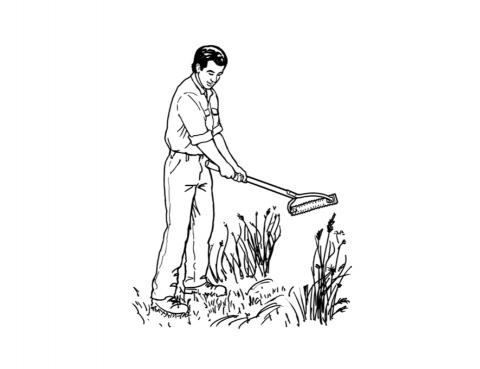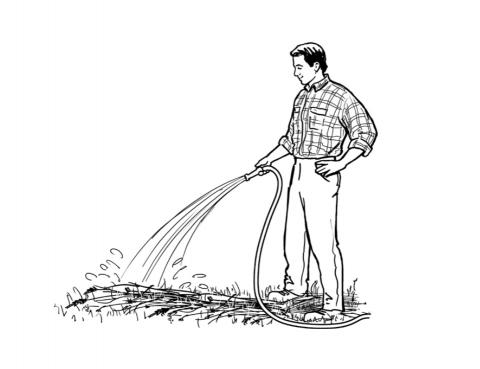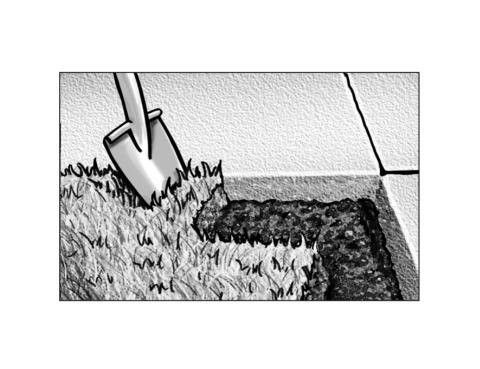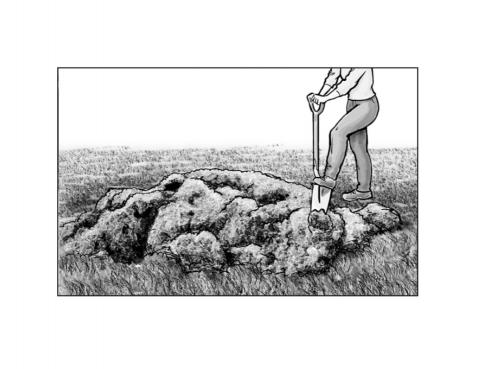- Knock down or mow existing vegetation so that it lies flat.
- Remove woody, bulky and invasive plants such as blackberries, oxalis, horsetail, kikuyu and Bermuda grass.
- Flag your sprinkler heads if you plan to retrofit your sprinkler heads for drip irrigation.
- Edge the lawn to avoid run-off and keep mulch from spilling onto paving. Use a flat-edged shovel to cut the lawn 8-12 inches away from the edge of the concrete. The soil should be at least 3 inches below the top of the concrete.
- Create mounds using the leftover soil and sod from edging, or simply sheet mulch in place. Just flip the edges over so the roots and soil face up. Don’t worry if you encounter the plastic netting that came with your sod, just throw away the pieces that you see. Mounds can create visual interest in the garden by adding height and depth. Many native plants like well drained soil and thrive on mounds.
Continue to Step 2: Plant the larger plants



